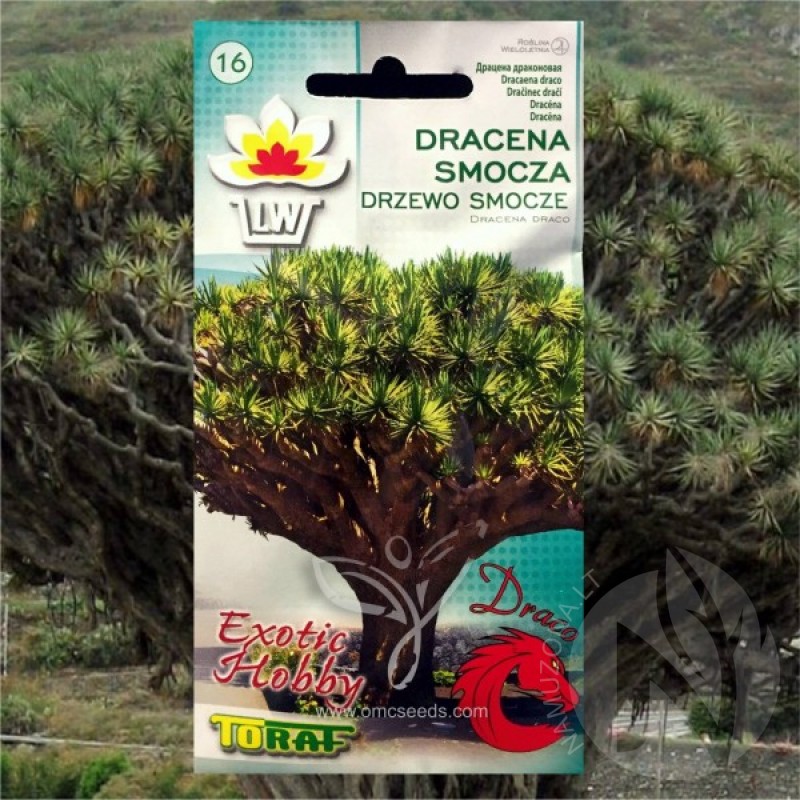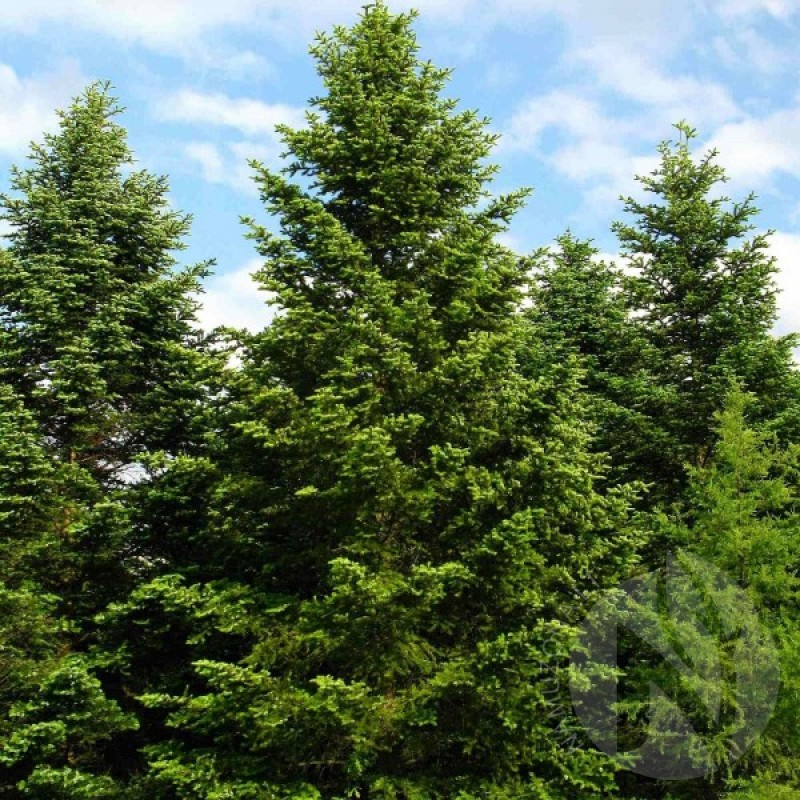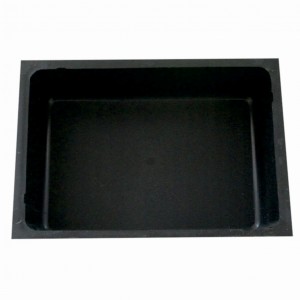
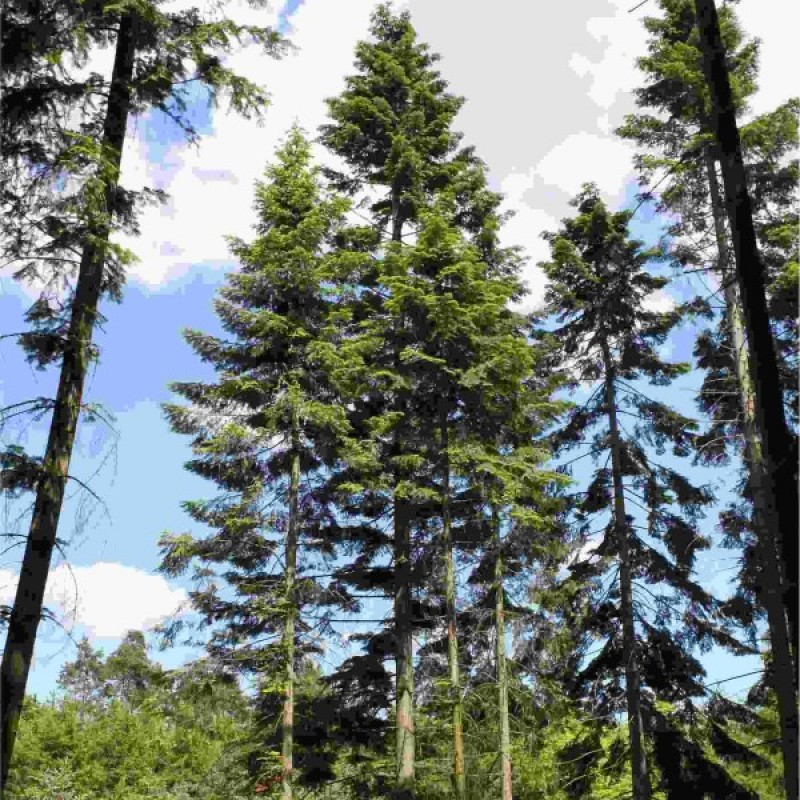
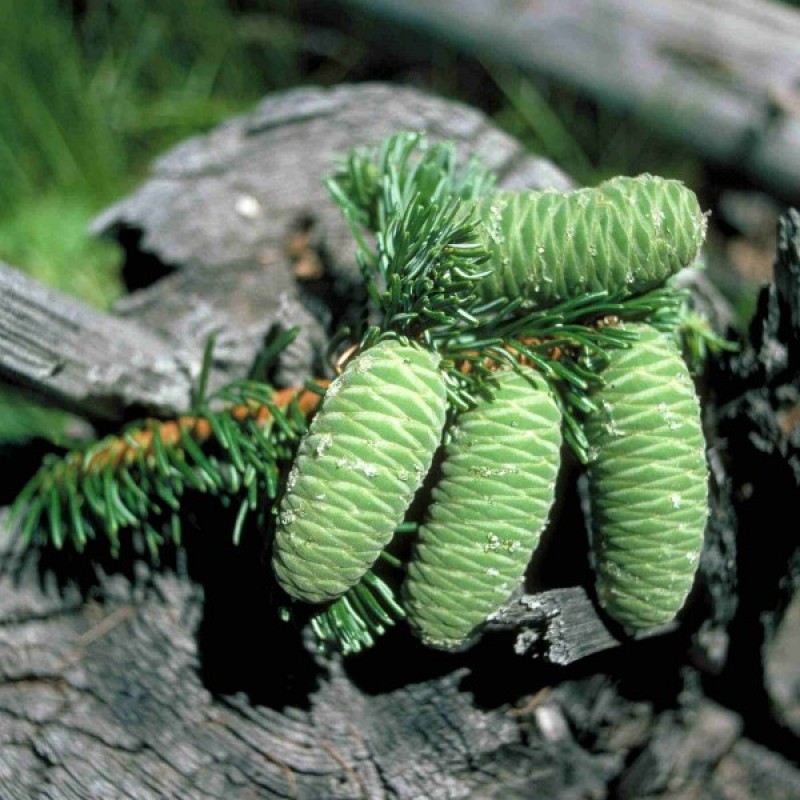

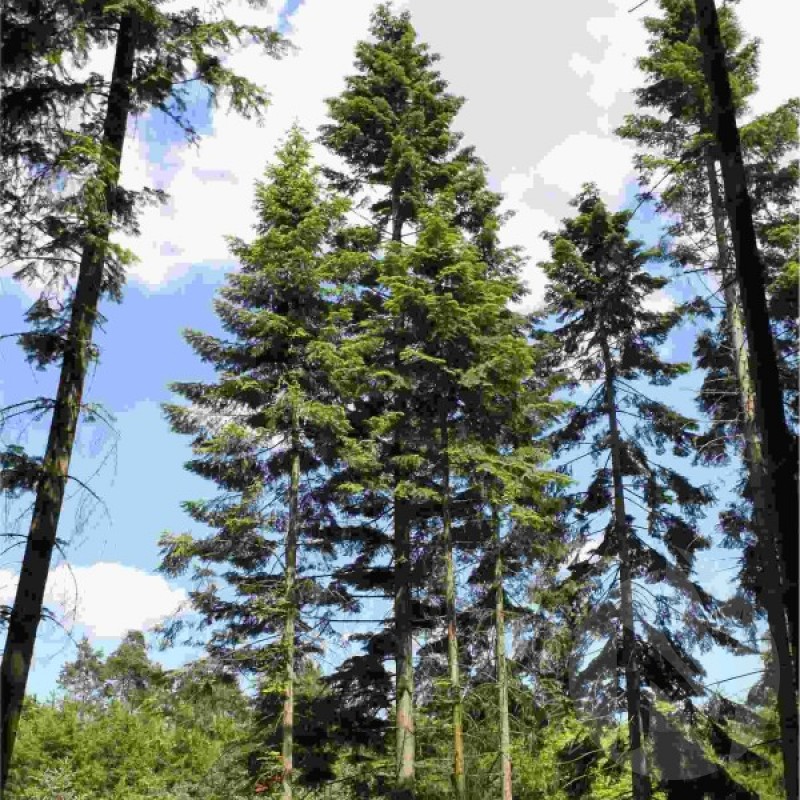
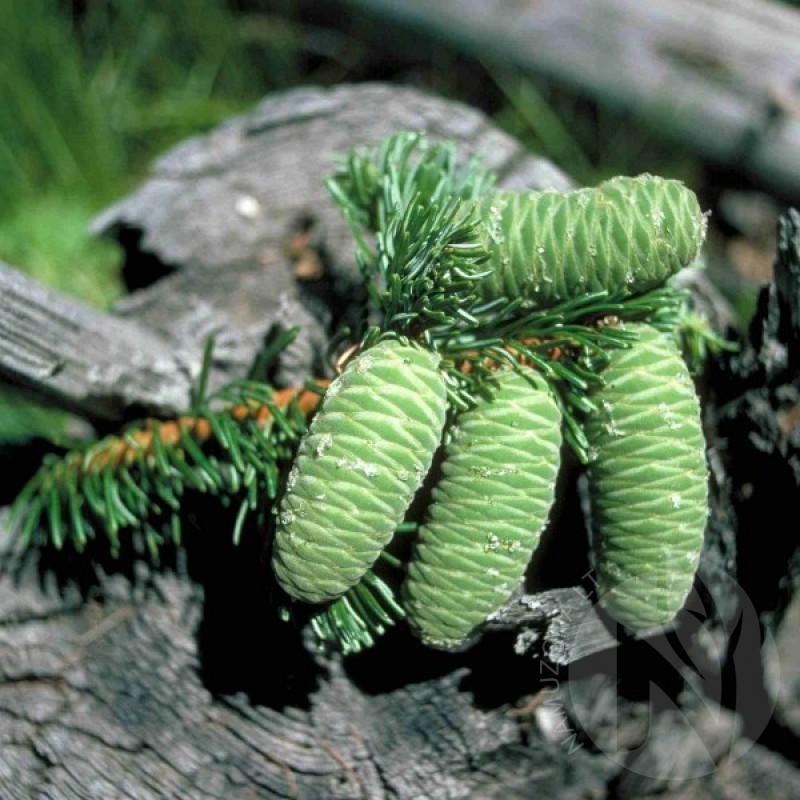
PAY ATTENTION!
All seeds (except SOLD OUT) are available for immediate shipping and will be dispatched within 1-2 business days.
INFORMATION NEEDED? PLEASE CONTACT US NOW!
This species is appropriately called the giant or grand fir because it's one of the tallest growing firs in the world, usually in the 200- to 300-foot (70 to 100 m) range. This evergreen is very fast growing, attaining a narrow column-like or spire-like silhouette with massive trunk. Native to the central Pacific coast of North America, the giant fir grows in British Columbia inland to the Idaho-Montana mountains and southward to northern California, where it's known along the coast. Some botanists find distinct physical variations among trees that grow east and west of the Cascade Mountains.
The bark is smooth and gray, but cracks into square plates on the oldest trees. Needles are soft, shiny and dark green with white bands on the undersides. The needles resemble the teeth of a two-sided comb. The cylindrical, pendent female cones are green but ripen to brown, usually with whitish globs of resin.
Grand fir is one of the more shade tolerant fir species, but looks fuller and more robust when grown in full sun. Plant it in a moist, acidic soil that's deep and rich in organic matter for best performance. Although grand fir matures to smaller heights in cultivation compared to a dense forest habitat, it's still too large for the vast majority of garden settings. Conserve trees that may already exist on a property, cutting off lowest limbs as needed for vehicular clearance or overall safety.
Genus - Abies
Species - Grandis
Common name - Grand Fir
Pre-Treatment - Required
Hardiness zones - 5 - 7
Height - 80'-300' / 24 - 70 m
Spread - 15'-25' / 5 - 8 m
Plant type - Tree
Vegetation type - Evergreen
Exposure - Full Sun, Partial Sun, Partial Shade
Growth rate - Fast
Soil PH - Acidic, Neutral
Soil type - Loam, Well drained
Water requirements - Average Water
Landscape uses - Feature Plant, Screening / Wind Break
Leaf / Flower color - Dark Green / --
GERMINATION INSTRUCTIONS
Abies seeds need to be "overwintered" or stratified before they will germinate.
1. Soak overnight in warm water.
2. Then pre-chill (stratify) for 30 days. Seeds can be stratified in dampened peat, sand or moist vermiculite , in a plastic box or bag at +4C in a refrigerator. The seeds should not be frozen or in a wet medium.
Seed can be sown in early February in a greenhouse or outdoors in March. Normally will only germinate with light, but the stratification (described above) can help to increase the germination rate.
Sow Abies seeds 2-4 mm deep in the seed sowing mix.
Abies seeds will usually germinate in 21-40 days if overwintered and stratified or about 6 - 8 weeks if sown directly.
Atsiliepimų apie šią prekę kol kas nėra.
No questions about this product.


